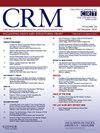Comparison of angiogram-based physiological assessment system sizing tool and intravascular ultrasound imaging measurements
IF 1.9
Q3 CARDIAC & CARDIOVASCULAR SYSTEMS
引用次数: 0
Abstract
Background
The diagnostic performance of an angiogram-based physiological assessment system (FFRangio™, CathWorks) has been already demonstrated. Besides performing a functional assessment, the FFRangio system provides a 3-dimensional quantitative coronary angiogram-based sizing tool (FFRangioST) to measure lumen diameter and vessel length. We aim to compare the measurements obtained using FFRangioST against measurements obtained with intravascular ultrasound (IVUS) in patients undergoing percutaneous coronary intervention (PCI).
Methods
We analyzed data from consecutive patients who underwent IVUS-guided PCI after FFRangio physiological assessment and FFRangioST assessment of lesion diameters and length from the Japan FFRangio clinical outcome registry (ClinicalTrials.gov. NCT05648396). For each lesion undergoing PCI, the correlation and mean difference for lesion length (LL), proximal reference diameter (RD) and distal RD as measured by FFRangioST/IVUS were assessed using pairwise comparisons, Pearson's correlation and Bland-Altman plots.
Results
Our cohort included 121 lesions from 115 patients. The FFRangio value in this cohort was 0.60 ± 0.1 (mean ± standard deviation). Mean LL (mm) was 31.1 ± 13.9 and 30.3 ± 14.3 by FFRangioST and IVUS, respectively. Correlation between the LL measurements was r = 0.986 (p < 0.001). Proximal RD (mm) was 2.6 ± 0.5 and 3.2 ± 0.6 by FFRangioST and IVUS, respectively, with correlation of r = 0.756 (p < 0.001). Distal RD (mm) was 2.2 ± 0.5 and 2.7 ± 0.5 by FFRangioST and IVUS, respectively, with correlation of r = 0.832 (p < 0.001). After inflating the original FFRangioST diameter value by 25 %, the average difference between the IVUS and FFRangioST measurements was 0.02 mm and −0.02 mm, for proximal and distal RD, respectively.
Conclusion
FFRangioST measurement has an excellent correlation with lesion length and high degree of correlation with a predictable coefficient (25 % inflation) with proximal and distal reference diameters when compared with IVUS measurement in PCI.
基于血管造影的生理评估系统与血管内超声成像测量的比较。
背景:基于血管造影的生理评估系统(FFRangio™,CathWorks)的诊断性能已经得到证实。除了进行功能评估外,FFRangio系统还提供基于冠状动脉造影的三维定量定尺工具(FFRangioST)来测量管腔直径和血管长度。我们的目的是比较FFRangioST和血管内超声(IVUS)在经皮冠状动脉介入治疗(PCI)患者中获得的测量结果。方法:我们分析了来自日本FFRangio临床结果登记处(ClinicalTrials.gov)的FFRangio生理评估和FFRangioST评估病变直径和长度后接受ivus引导PCI治疗的连续患者的数据。NCT05648396)。对于每个接受PCI的病变,采用两两比较、Pearson’s相关性和Bland-Altman图评估FFRangioST/IVUS测量的病变长度(LL)、近端参考直径(RD)和远端参考直径的相关性和平均差值。结果:我们的队列包括115例患者的121个病变。该队列的FFRangio值为0.60±0.1(平均值±标准差)。FFRangioST和IVUS的平均LL (mm)分别为31.1±13.9和30.3±14.3。结论:与IVUS测量相比,FFRangioST测量与病变长度具有良好的相关性,与近端和远端参考直径的可预测系数(25%膨胀)具有高度相关性。
本文章由计算机程序翻译,如有差异,请以英文原文为准。
求助全文
约1分钟内获得全文
求助全文
来源期刊

Cardiovascular Revascularization Medicine
CARDIAC & CARDIOVASCULAR SYSTEMS-
CiteScore
3.30
自引率
5.90%
发文量
687
审稿时长
36 days
期刊介绍:
Cardiovascular Revascularization Medicine (CRM) is an international and multidisciplinary journal that publishes original laboratory and clinical investigations related to revascularization therapies in cardiovascular medicine. Cardiovascular Revascularization Medicine publishes articles related to preclinical work and molecular interventions, including angiogenesis, cell therapy, pharmacological interventions, restenosis management, and prevention, including experiments conducted in human subjects, in laboratory animals, and in vitro. Specific areas of interest include percutaneous angioplasty in coronary and peripheral arteries, intervention in structural heart disease, cardiovascular surgery, etc.
 求助内容:
求助内容: 应助结果提醒方式:
应助结果提醒方式:


